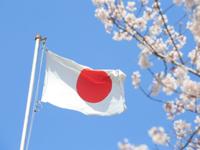Japanese Whisky Gets A Legal definition
Contents

Whisky has been officially distilled in Japan since 1923 but was largely unnoticed for most of this time. In the last few years spirits from the East, whisky in particular have been gaining global recognition, not least because the manufacturers have placed greater emphasis on marketing and the optimization of their production conditions. Such has been the success of Japanese whisky that one, the 35-year-old single malt “Karuizawa 1978”, ranks among the most expensive whiskie in the world. Another, the Suntory Kakubin, is one of the top 20 best-selling whisky brands in the world. An impressive feat when we consider Japan only started to export in any volume in 2000. Unfortunately for all this time there have been discussions within the whisky scene about how much of the Japanese whisky on the market is actually produced in Japan to such a degree that it’s become a common joke among whisky fans and some of the most instantly recognised Japanese whiskies (such as Nikka from the Barrel) aren’t technically Japanese.
A Lack of legislation
When blending their whiskies, not all Japanese producers use whisky actually produced in Japan. So far there have been no clear regulations and not all Japanese whisky blenders provide transparent information. Ben Nevis distillery in Scotland, owned by Nikka, has famously struggled to secure enough stock for it’s own standard expressions due to the amount being exported to Japan for blending and it has not been alone. The lack of any standards to define “Japanese Whisky” has made it possible for Japanese spirits producers to import whisky from Scotland, Canada, and other countries for blending sometimes with a small amount of domestically distilled and legally call the resultant product a “Japanese Whisky”.
The Standards for Labeling Japanese Whisky
The Japan Spirits & Liqueurs Makers Association has now made a binding stipulation which criteria a whisky must meet in order to be called Japanese whisky. While this is a huge step forward it does not completely resolve the issue. The “Standards for Labeling Japanese Whisky” are binding for members of the Japan Spirits & Liqueurs Makers Association from April 1, 2021. While the essential whisky producers such as Asahi, Suntory or Kirin are members not all Japanese whisky manufacturers will be bound by these new standards. The full list can be found on the Association’s homepage. A transition period applies until March 31, 2024.
What exactly do the new whisky rules mean for Japanese Whisky?
When setting the standards for Japanese whisky, the Japan Spirits & Liqueurs Makers Association is guided by international guidelines. In the future, if a whisky bears the Japanese whisky label on the label, it must meet the following conditions:
- Malted grain must be used as the starting material, other grain may be added.
- The water used must come from Japan.
- The production process from malting through fermentation, distillation and maturation must take place in a Japanese distillery.
- A maximum of 95% vol. May be distilled.
- Japanese whisky must be stored in wooden barrels with a maximum volume of 700 liters for at least three years.
- When bottling, which must take place in Japan, the alcohol content of the whisky must not fall below 40% vol.
- Coloring with caramel (E150) is allowed.
Avoid misleading the consumer
If a whisky does not meet these standards, it can and will still legally be called whisky. However it is probited to mislead consumers into thinking that it is regulated Japanese whisky by use of naming convention (such as using the name of a Japanese region, river or city in its name), or by labelling using the Japanese flag or any other distinguishing motif on the label. It will be interesting to see which Japanese whisky manufacturers will then change the composition of their whiskies over the next three years and whether some would prefer to dispense with the attribute Japanese on the label. In any case, this is a fantastic step towards greater transparency and consumer safety.
References
- The complete Standards For Labeling Japanese Whisky is available in English translation pdf from the Japan Spirits & Liqueurs Makers Association.
- Nikka from the barrel not a Japanese Whisky from Master of Malt blog
- Old Particular Ben Nevis from Malt Review

